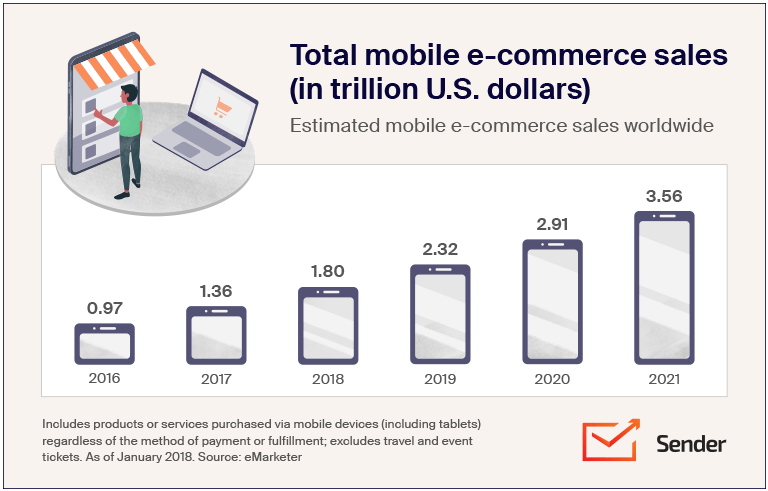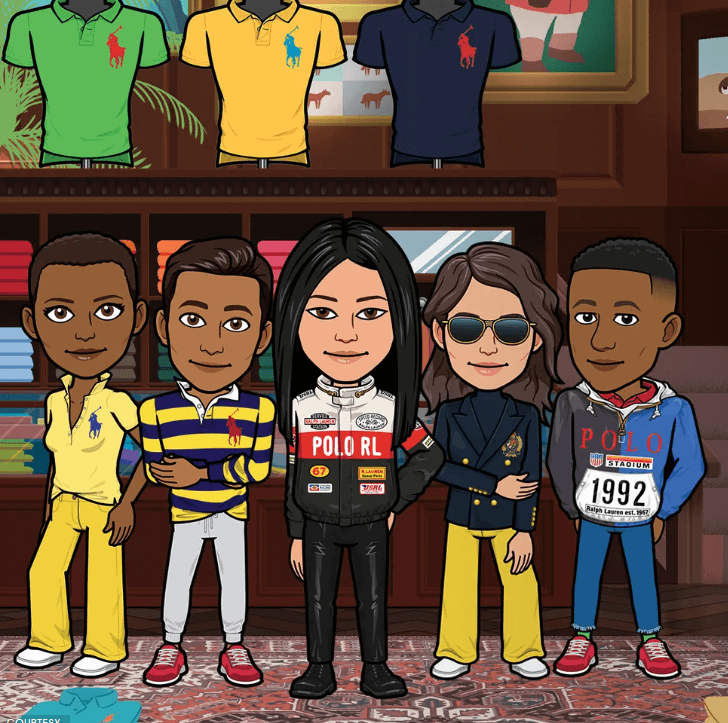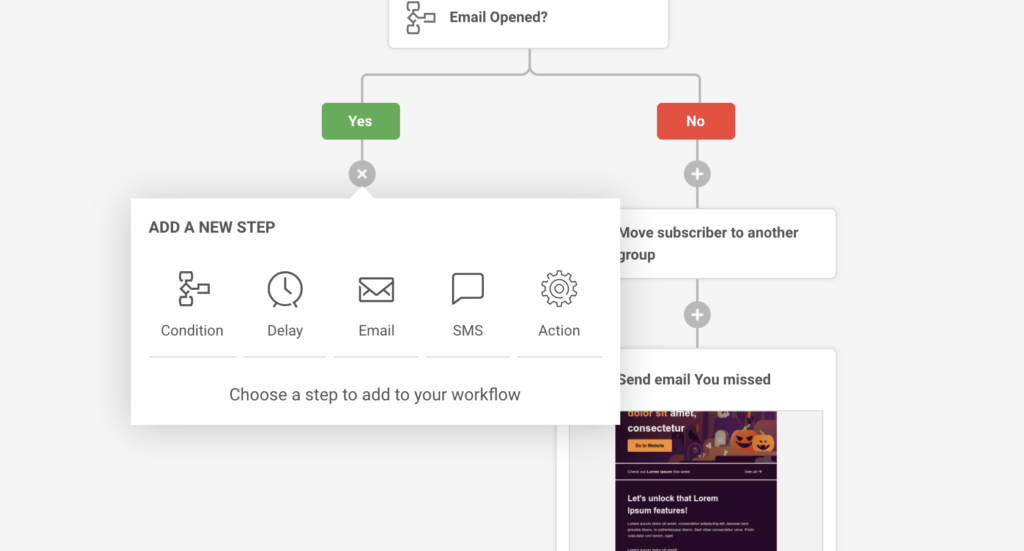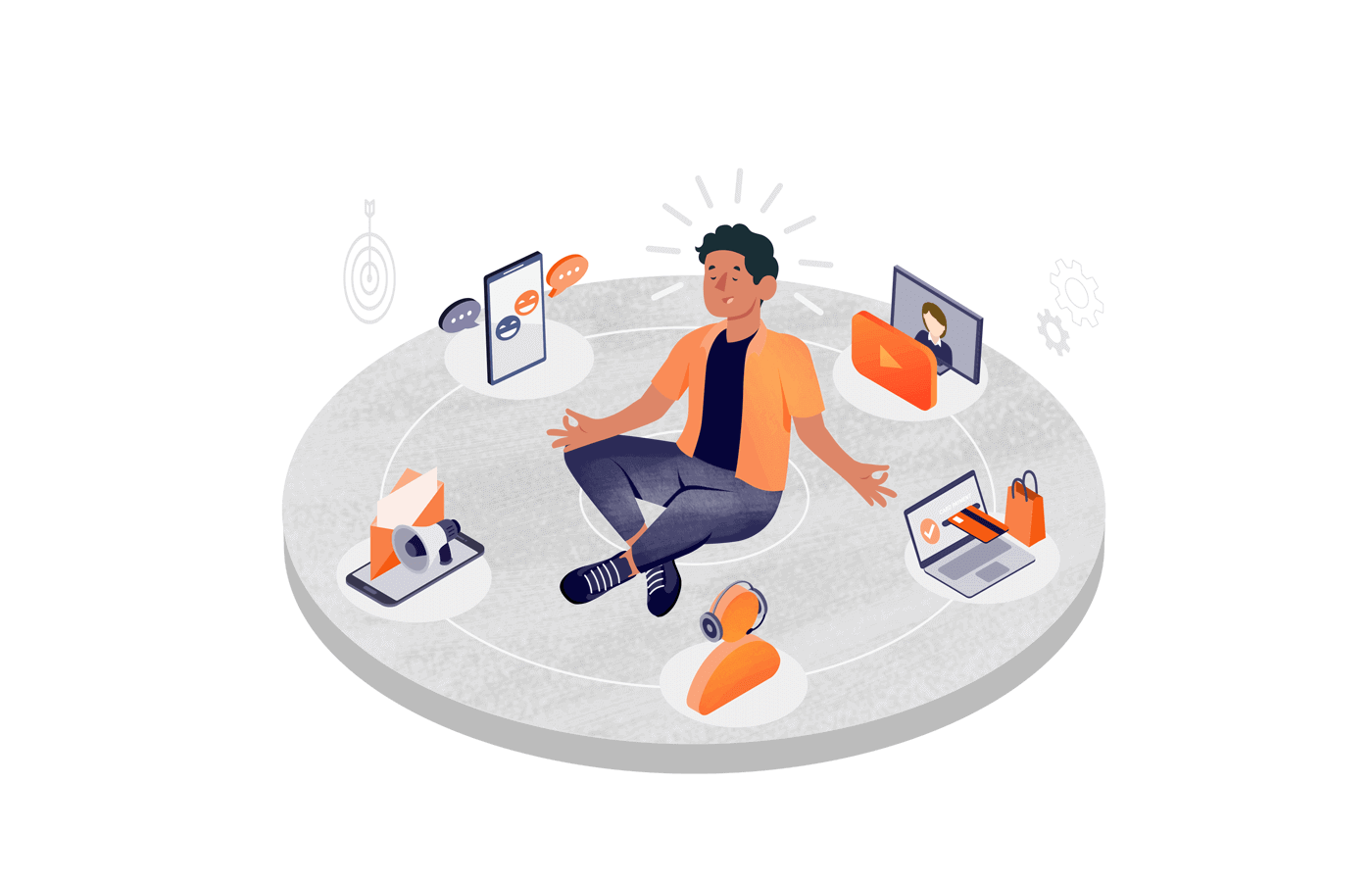Do you remember the last time you made a significant online purchase?
If you’re like most shoppers, there’s a good chance you interacted with the business several times across multiple channels using different devices before you paid.
The customer journey isn’t straightforward anymore. Instead, it’s a meandering path where consumers visit brands on various platforms before converting.
A customer now uses an average of six touchpoints during a purchase. Compare that to just two a decade and a half ago.
So, you can no longer rely on just your customer service quality to ensure customer loyalty. Instead, you must focus on consistently engaging with your audience across multiple channels.
But what do you do when you can’t seem to deliver consistent messaging and information across your preferred channels?
The solution is to create an omnichannel customer engagement strategy.
Definition: Omnichannel Customer Engagement
Omnichannel customer engagement is where you give consumers a seamless and consistent experience, regardless of what channel they’re using to interact with your business. Definition: Omnichannel Customer Engagement
One of the essential features of omnichannel customer engagement is proactive communication — anticipating problems and presenting solutions even before the customer knows they need them. That will give the customers a sense of being truly looked after.
Most customers return to stores that provide an omnichannel experience. Aspect Software shares that organizations that use an omnichannel strategy have 91% better year-over-year customer retention rates than those that don’t.
What is an Omnichannel Customer Engagement Strategy?
Businesses with an omnichannel strategy have greater customer engagement and an increase in average order value and purchase frequency.
According to Worldpay, omnichannel consumers spend approximately 50 to 300% more than traditional shoppers.
In addition, purchase frequency is 250% higher on omnichannel versus single-channel platforms.
Such stats show that omnichannel is crucial and that businesses that haven’t started building an omnichannel strategy are driving in the slow lane.
The Benefits of Omnichannel Customer Engagement
Some of the benefits of developing an omnichannel customer engagement strategy include:
Unified customer data
Data silos disrupt omnichannel strategies and make scalable one-to-one personalization hard to achieve. A customer engagement platform will help you achieve customer-centricity by synchronizing data from multiple sources to create a unified view of your customer data.
Ideal personalization via unified customer profiles
An omnichannel platform maps all touchpoints across all channels to individual customer profiles.
These profiles have predictive indicators, allowing you to make informed decisions about your customers and deliver one-on-one omnichannel personalization based on their preferences and how they interact with your brand.
Customer Segments
Thanks to Artificial Intelligence (AI), predictive analytics considers all customer actions and attempts to learn customer behavior. These analytics enable you to segment audiences effectively and deliver relevant messaging based on preferences and demographics.
Omnichannel Customer Engagement Strategies & Tips
To succeed, you need to invest in omnichannel customer experience as customers’ behavior changes with every interaction.
That said, here are some proven omnichannel customer engagement best practices you can learn from:
- Create a personalized experience
- Offer a dynamic experience
- Stay ahead in the game by using chatbots to increase customer touchpoints
- Your channels should work with one another
- Make it easy for the customers by integrating self-service
- Understand your target audience
- Integrate in-store and online experience
- Go digital by focusing on mobile device integration
- Create an immersive experience
- Focus on the details by developing a customer-centric mindset
- Make the customer journey unique by focusing on the customer experience
How to Create a Successful Omnichannel Customer Engagement Strategy
Since now that you have more knowledge of the omnichannel customer engagement process, here are a few more steps to help create your own omnichannel strategy:
Create a Personalized Experience
Personalization is the key to omnichannel’s future. Gladly reports that 79% of customers value personalized customer service more than personalized marketing. So, if you treat your customers like another number, they won’t feel valued.
The personal touch your customers want usually begins with your service agents. Train your agents to listen to your customers and respond politely.
Even simple things such as asking your customers how they’d like to reach you will increase loyalty and decrease frustration.
According to Gladly’s 2020 CX Report, the top three factors customers want brands to know about them are:
- Who they are?
- What they’ve already talked about?
- What they’ve bought?
With the right omnichannel tools, your agents have access to detailed customer history and can quickly retrieve this information without putting your clients on hold.
For example, with an omnichannel platform, a service agent talking to a customer on the phone will see customer data such as emails, Twitter posts, and Facebook comments the customer might have made. As a result, the customer won’t have to repeat their issue since the service agent will have all their info.
Personalized customer experiences also lead to positive reviews and referrals.
You increase brand loyalty and advocacy when you meet your customers’ expectations. In fact, 52% of satisfied customers will recommend you on a social media platform. And another 77% will refer your business to family and friends.
When you use a more personalized approach, everybody wins. You’ll end up with motivated employees, happy customers, and more referrals.
Also read: 7+ Email Personalization Practices with Real Examples
Offer a Dynamic Experience
To offer a dynamic experience, you need to connect your digital footprints. You must focus on the five customer touchpoints where this integration happens — website, digital displays, mobile app, interactive screens, and point of sale.
To make the most of these touchpoints, use them consistently to deliver a dynamic experience.
For example, let’s assume a customer visits your website to buy shoes and adds a product to his cart but leaves without making a purchase.
You send him an email with an exclusive discount offer for the shoes he added to his cart. If he misses the email, you send a personalized WhatsApp message nudging him to use the link to make the discounted purchase. He then eventually checks out after buying the product.
By reaching the customer through various channels, your communication will be more personal and efficient.
Use Chatbots to Increase Customer Touchpoints
As digital demand increases, businesses depend more on digital assistants and chatbots. Approximately 50% of companies intend to spend more on chatbots than mobile apps. That’s because chatbots can reduce operational costs by up to 30%.
Although chatbots aren’t real humans, there are many ways you can use them without sacrificing your personal touch.
A chatbot can help you:
- Increase customer engagement since you’ll always be available to interact with customers.
- Operate 24/7, which is superb for customers living in different time zones.
- Collect and analyze customer data to get valuable insights about your audience and what makes them tick.
- Relieve pressure on service agents by handling simple customer problems.
Your Channels should Work with One Another
Customers want you to remember them — whether they last interacted with you on the phone, through one of your social channels, or online. They also expect you to remember when you offer them products and services.
All your channels must work with one another to achieve that, so no customer interaction is missed. So record your customers’ digital body language, store it in one central place, and make it available to all channels.
Also, focus on the channels and touchpoints your customers and prospects spend the most time on.
For example, if your customers use Twitter more than Facebook and prefer mobile shopping to desktop shopping, create a robust omnichannel strategy for those channels before expanding to other platforms.
Make it Easy for the Customers by Integrating Self-Service
Incorporate self-service to make it easy for customers to solve their issues. That’s essential since 81% of customers attempt to troubleshoot their problems before contacting formal customer service channels.
Create and maintain easily accessible and fully-searchable knowledge bases and self-service portals, and empower customers to use them.
You can then analyze the questions asked through self-service and use that insight to address other issues in the customer’s journey quickly.
As a result, self-service will increase efficiency and enhance customer satisfaction.
Understand Your Target Audience
Understanding your target audience will help your brand grow. It’s what drives effective marketing strategies and ultimately improves your company’s bottom line.
But understanding is a journey. It’s a continuous process of review, refinement, and readjustment. Your brand’s performance will stagnate or decline if you don’t regularly revisit your target audience.
Understanding your audience isn’t always a straightforward process, but it’s necessary. It will ensure you’re using an omnichannel approach that resonates with your audience and delivers on customer expectations.
When you understand your audience, you can:
- Integrate diverse behavioral signals from online and offline environments to improve customer interactions with your brand.
- Ensure your products and services are relevant to your potential customers.
- Analyze and track your audience responses to finetune your business processes.
Integrate In-Store and Online Experience
Aligning in-store and online experiences should be a priority for every omnichannel retailer.
Customers expect to seamlessly transition from online to in-store (and vice versa) while receiving a consistent experience across both channels.
That said, you can seamlessly integrate your in-store and online experience to attract and convert customers by:
- Ensuring consumers have access to real-time product availability.
- Empowering store associates to assist customers in-store effectively.
- Offering a live chat.
- Ensuring all promotions, coupons, and other marketing campaigns are consistent since customers expect the discounts they see in an online advert to be available in-store.
Go Digital by Focusing on Mobile Device Integration
Industry experts predicted that by the end of 2021, mobile phones would account for nearly 73% of ecommerce sales.

In addition, people spent 4.8 hours on their mobile devices in 2021. And consumers are increasingly using mobile chat technology such as Apple Business Chat, Facebook Messenger, and WhatsApp to communicate with companies.
With 77% of customers saying they’re more likely to purchase if they can get answers over messaging, now is the time to incorporate mobile channels into your omnichannel strategy.
Create an Immersive Experience
Ralph Lauren is one iconic brand at the forefront of creating immersive, omnichannel experiences.
For example, Ralph Lauren’s clothing line is available in the Bitmoji closet, allowing customers to dress their digital selves in the brand’s signature preppy look.

That’s just one of many ways that companies are starting to offer immersive omnichannel experiences through Apps and online gaming.
Focus on the Details by Developing a Customer-Centric Mindset
For your company to provide individualized services and maintain superior omnichannel experiences, the customer-centric view needs to move from the C-suite to the agent level.
The C-suite leaders’ behavior will serve as a role model to the employees.
For example, top management at one North American bank understands what’s important to their clients by regularly visiting the call center and sharing customer feedback with staff across the company. They then recognize the employees and celebrate their outstanding customer service publicly.
If you’re not customer-centric and focused on customer journeys, you’re likely to spend your resources in the wrong places and fall behind the competition.
Make the Customer Journey Unique by Focusing on Customer Experience
Most businesses are now focusing on customer experience since 86% of consumers would be willing to pay more for a better experience.
Companies that engage customers successfully increase revenues, get higher customer satisfaction rates, and reduce churn. If you want loyal customers, you must invest in their experience.
Oracle shares that 74% of senior executives believe that customer experience influences a customer’s willingness to be a loyal advocate.
That said, you can improve your customers’ experience by:
- Understanding who your customers are to be able to connect and empathize with the situations they face.
- Creating an emotional connection with your customers.
- Capturing customer feedback in real-time.
How to Develop a Successful Omnichannel Customer Engagement Solution
Now that you understand the various omnichannel customer engagement strategies businesses use, here are four steps to develop your own omnichannel strategy:
- Determine which channels your customers are using
- Map your customer journey
- Match your content with the appropriate channel
- Provide cross-channel customer support
Determine which Channels Your Customers are Using
A successful omnichannel customer engagement strategy doesn’t require you to focus on every new channel. Instead, you should concentrate on platforms your customers use to maximize your business’ growth.
For example, if your primary customer segment is 70-year-old woman, having an Instagram account for your brand may waste time. Similarly, if you’re only targeting men, there may not be a compelling case for promoting your business on Pinterest.
So, discover which channels your customers are using to interact with your brand to determine which platforms you should use for your omnichannel customer engagement strategy.
Map Your Customer Journey
A customer journey map shows all the touchpoints customers encounter with your brand. It also helps you look at your business via the customer’s eyes to visualize the customer’s journey through the funnel.
It’s crucial to map out your customer journey from one channel to another to ensure no gaps in your omnichannel strategy.
You can do so by:
- Setting clear objectives for the customer journey map
- Profiling your buyer personas and defining their goals
- Listing all the touchpoints your prospects and customers are currently using
Match Your Content with the Appropriate Channel
You’ll never achieve your brand’s omnichannel marketing goals if you don’t share your content wisely. In addition, for successful omnichannel marketing, you should deliver relevant messages to specific channels.
For example, short texts are ideal for Twitter, images perform well on Instagram, videos succeed on YouTube, and long-form content does well in email newsletters.
However, your communication channels should all work together to achieve your business objectives.
Provide Cross-Channel Customer Support
Today, customers want to chat with customer care agents the same way they communicate with friends via multiple channels — and sometimes, they share multimedia files in real-time. So, it’s essential to provide customer support at all touchpoints.
You can provide cross-channel support by meeting customers on their preferred channels, providing seamless experiences no matter which channel they prefer.
Get Started with the Correct Omnichannel Customer Engagement Platform
Your business can reap huge benefits from a successful omnichannel customer engagement strategy.
It can be challenging to ensure that customer experience is consistent. But you can be confident that with the right omnichannel customer engagement platform like Sender, you can overcome these challenges and deliver excellent results for your company.
Sender combines the ability to send out both emails and SMS messages. Unite emails and SMSes into a tightly-knit automation sequence to create the perfect high-conversion omnichannel engine for your business.

Also read:
- What is Cross Channel Marketing? Definition & Examples
- What is Multichannel Marketing? Definition +6 Strategies
- What Is a Repeat Customer? Definition, Formulas & Rates
Content Contributor – Billy Njogu




